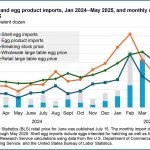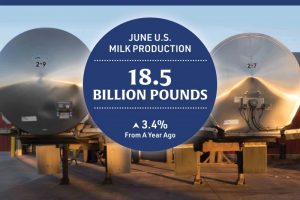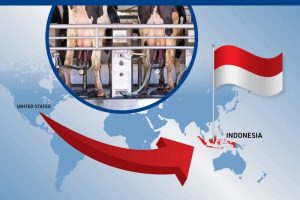
Record-Breaking Milk & Cheese Shipments Shine Amidst Broader Trade Challenges.
The overall landscape of U.S. agricultural trade has begun 2025 with a concerning trend, recording a significant deficit. Between January and April, the United States imported a record $78.2 billion in agricultural products, while exports totaled just $58.5 billion, resulting in an unprecedented nearly $20 billion trade deficit. Despite this challenging outlook for the broader sector, U.S. dairy exports have emerged as a notable bright spot, exceeding $3 billion through April—a new record—and outpacing dairy imports by over $1 billion, showcasing remarkable resilience in dairy economics.
In 2024, the U.S. successfully exported $8.2 billion worth of dairy products to 114 countries and the European Union, contributing close to 5% of total agricultural export value. While this reach is broad, a significant concentration exists, with just 10 markets accounting for 74% of the total export value. Notably, over half of all U.S. agricultural exports, including substantial dairy volumes, were concentrated in Mexico, Canada, and China – countries currently at the center of ongoing trade tensions, which poses a strategic challenge for global dairy trade.
The majority of U.S. dairy exports consist of manufactured products with longer shelf lives and greater shipping efficiency, as fluid milk and cream are costly to trade internationally due to perishability and high water content. In 2024, cheese led the way, with over $2.4 billion exported (nearly 30% of total dairy export value). Nonfat dry milk ranked second, contributing over $2 billion, while powdered ingredients like lactose and milk protein concentrates also played a significant role, reinforcing the importance of value-added dairy products in export markets.
Exports are not merely a bonus for the U.S. dairy industry; they are essential for its continued competitiveness and profitability. With production efficiency consistently rising and per capita fluid milk consumption experiencing a long-term decline domestically, the industry must look beyond its borders. Approximately 16% of all milk production in the U.S. is destined for export. Powdered dairy products, such as lactose (86% exported), nonfat dry milk (over 75% exported), and whey (nearly 70% exported), show a particularly high reliance on international markets, which helps U.S. dairy plants operate more efficiently.
Despite the strong performance, this high level of export exposure also renders U.S. dairy vulnerable to shifts in trade policy, especially with key markets like Mexico, Canada, and China. Historically, the dairy sector has often been among the first to be impacted when trade tensions escalate. While dairy has largely been exempt from recent major tariff actions, industry leaders remain vigilant, understanding that even robust export markets can become a source of risk for U.S. producers amidst evolving international trade strategies.
Source: American Farm Bureau Federation: Strong Start, Fragile Future: U.S. Dairy’s Trade Balancing Act
You can now read the most important #news on #eDairyNews #Whatsapp channels!!!
🇺🇸 eDairy News INGLÊS: https://whatsapp.com/channel/0029VaKsjzGDTkJyIN6hcP1K























